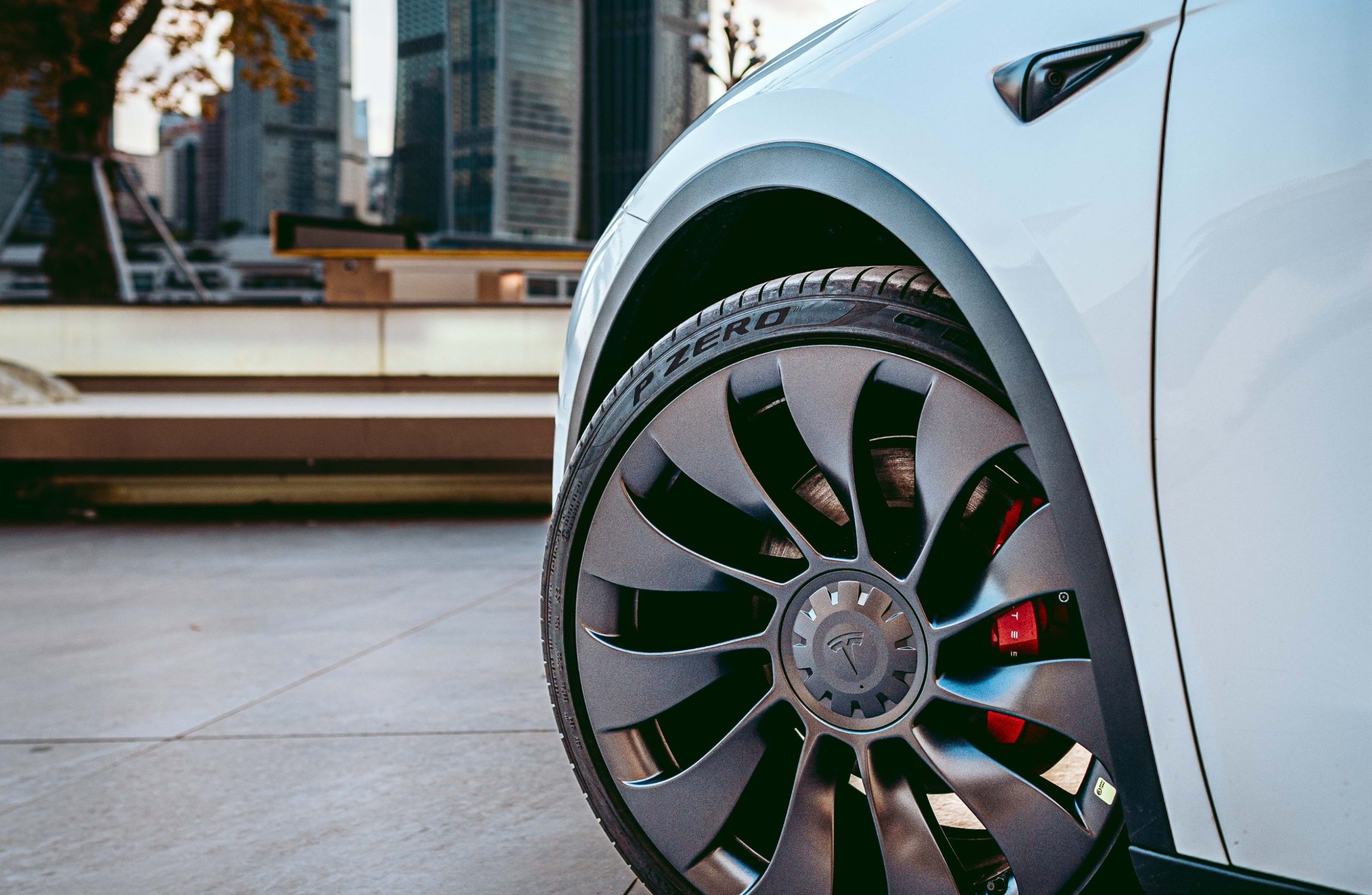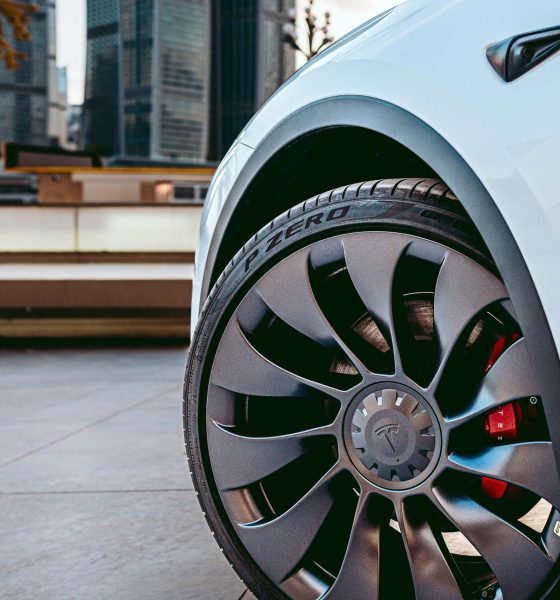

News
Despite Tesla’s growth, the EV revolution still caught the auto industry off guard
The signs of an EV revolution were all there, but it seems like consumer demand for all-electric vehicles was still able to catch veteran automakers off guard. With Tesla currently commanding about 70% of the United States’ electric vehicle sales in the first half of the year, the race to catch up to the trailblazer is on — but it’s a lot easier said than done.
It’s a pretty insane thought today, but when Tesla announced its plans to build a dedicated battery factory to support the Model 3’s ramp, many were skeptical. Back then, many still questioned if there really was a demand for electric cars. This is not the case anymore today. If auto executives were not sure if there would be buyers for EVs before, now they’re worrying if they can build them fast enough.
Electric cars only account for about 6% of the United States’ overall vehicle sales, but this percentage has tripled in the past two years. Meanwhile, sales of other types of cars have declined, as per insights from research firm Motor Intelligence. This was represented by the fact that five of the six fastest-selling cars in the US were electric or plug-in hybrids. Tesla’s Model Y, a crossover, is on track to become one of the world’s best-selling cars.
All-In on EVs
Veteran automakers have expressed their intention to go all-in on EVs, and some, such as GM CEO Mary Barra, have even stated in the past that she believes General Motors can pass Tesla in the future. The same is true for executives from Ford and Volkswagen. But inasmuch as it’s easy to announce such an ambitious target, accomplishing it is a completely different matter.
GM, for example, started its recent EV push with the GMC Hummer EV and the Cadillac Lyric. GM received a lot of support from the Biden administration for its electric vehicle efforts, so much so that Biden dubbed Barra as a leader who electrified the auto industry. Yet, according to The Wall Street Journal, people familiar with the matter have noted that the production of the Hummer EV and Lyriq is still at rates of less than a dozen a day. This was despite the waiting lists of both vehicles stretching into the tens of thousands.
And it’s not just GM. Ford is somewhat in the same boat. The Ford F-150 Lightning is an acclaimed vehicle, and its order books are extremely long. The demand for the vehicle was so notable that Ford had to double its production target twice. In 2020, the company expected its lightning factory to produce 40,000 of the pickups per year, a target that was doubled last year. This past January, as the order books for the Lightning continued to grow, Ford doubled its target again to 150,000 trucks by summer 2023.
Ford’s head of EV programs Darren Palmer provided an idea of the speed at which Ford had to adjust its Lightning targets. “The cement had barely joined to some of the walls, and we were already expanding,” he said.
A Rush for Supplies
A lot of the challenges faced by veteran automakers were due to a lack of parts from the supply chain, as well as a struggle to secure as many batteries as possible. EVs use more computer chips than combustion-powered cars, which made things very challenging during the chip crisis faced by the entire industry. Electric cars also rely on batteries, so carmakers are now in a battery arms race of sorts in an effort to ensure that their EVs can be ramped.
Ultimately, the Journal noted that automakers are in their current situation because many have lowballed their early EV production estimates. Thus, when electric vehicles took off during the pandemic, many executives in the auto industry were caught off guard. Couple this with the fact that newcomers like Rivian and Lucid are also entering the fray, and the auto industry is looking more and more like it’s in the cusp of some real changes.
In a way, it’s simple. If veteran automakers would like to catch up to Tesla, they have to make electric cars that people want to buy. The success of non-Tesla EVs such as the F-150 Lightning, Mustang Mach-E, and the Hyundai Ioniq 5 show that the EV market has enough space for multiple carmakers. But with demand for EVs increasing now, some automakers may end up watching EV only competitors like Tesla increase their lead in the coming years.
The question of whether there is demand for EVs has long been settled. In a statement to the WSJ, Earl Stewart, a Florida-based Toyota dealer, noted that there’s actually a lot of interest in the bZ4X. However, the vehicle’s availability is just not there. Stewart noted that mass adoption of electric vehicles would need affordable electric cars. That being said, he has already taken the leap to EVs — he currently drives a Tesla Model S Plaid.
“Until they bring the prices down, it will just be people like me who can afford to buy EVs and who want to be the first on the block to drive one,” Stewart said.
Don’t hesitate to contact us with news tips. Just send a message to simon@teslarati.com to give us a heads up.

Elon Musk
Elon Musk: Tesla Model Y is world’s best-selling car for 3rd year in a row
The Model Y has now established an impressive streak that would otherwise have been impossible before Tesla.

Elon Musk has announced that the Tesla Model Y has become the world’s best-selling car by volume for the third consecutive year, capping 2025 with another dominant performance.
The Model Y has now established an impressive streak that would otherwise have been impossible before Tesla.
Three years in a row
Musk posted on X: “Tesla Model Y is now officially the world’s best-selling car for the third year in a row!” The CEO’s comment echoed an update that Tesla included in its 2025 recap, which highlighted, among other things, the Model Y’s incredible streak.
The Model Y has held the title since 2023, outperforming traditional leaders like the Toyota RAV4 and Corolla thanks to its bang-for-the-buck nature and its stellar combination of practicality, performance, and tech. The Model Y is also lauded as one of the safest vehicles on the road, making it an ideal choice for families in key markets such as China.
An impressive 2025
The Model Y’s sales feat in 2025 is especially impressive considering the introduction of the vehicle’s new variant. Tesla’s changeover to the new Model Y across its global factories resulted in sales being paused for some time in the first quarter. As per Tesla’s Q1 2025 vehicle delivery and production report, “the changeover of Model Y lines across all four of our factories led to the loss of several weeks of production in Q1.”
This suggests that the Model Y’s sales remained strong in 2025 to the point where it could still claim the title of the world’s best-selling vehicle by volume, even with its sales being throttled during the first quarter of the year. It would then be interesting to see just how far the Model Y can go in 2026, especially considering the rollout of new variants like the six-seat extended wheelbase Model Y L, the affordable Model Y Standard, and the top-tier Model Y Performance.
News
Tesla shares epic 2025 recap video, confirms start of Cybercab production
The cinematic montage, posted by the official Tesla account on X, celebrated the company’s progress in EVs, energy, and Robotaxi development.

Tesla has released an epic year-in-review video for 2025, recapping some of its major achievements from refreshed models to autonomy breakthroughs and production ramps.
The cinematic montage, posted by the official Tesla account on X, celebrated the company’s progress in EVs, energy, and Robotaxi development while looking ahead to an even bigger 2026.
Tesla’s 2025 highlights recap
Tesla has had a busy 2025, as highlighted in the recap video. The video opened with Elon Musk explaining the company’s pursuit of sustainable abundance. A number of milestones were then highlighted, such as the rollout of FSD v14, Optimus’ numerous demos, the opening of the Tesla Diner in Hollywood, LA, the completion of the world’s first autonomous car delivery, and the launch of the Robotaxi network in Austin and the San Francisco Bay Area.
Tesla also highlighted several of its accomplishments over the year. As per the company, the Model Y was the year’s best-selling vehicle globally again, and Teslas became more affordable than ever thanks to the Model 3 and Model Y Standard. Other key models were also rolled out, such as the refreshed Model S and X, as well as the new Model Y, the new Model Y Performance, and the six-seat, extended wheelbase Model Y L.
The Megablock was also unveiled during the year, and the Supercharger Network grew by 18%. Over 1 million Powerwalls were also installed during the year, and the Cybertruck became the first EV truck to get both an IIHS Top Safety Pick+ award and an NHTSA 5-Star safety rating.
Cybercab production confirmed
Interestingly enough, Tesla also confirmed in its 2025 recap video that the production of the Cybercab has started. This bodes well for the vehicle, as it could result in the vehicle really being mass-produced in the first half of 2026. Elon Musk confirmed during the 2025 Annual Shareholder Meeting that Cybercab production should earnestly start around April 2026.
Musk has also noted that the Cybercab will be Tesla’s highest-volume vehicle yet, with the company aiming for an annual production rate of about 2 million units. “If you’ve seen the design of the Cybercab line, it doesn’t look like a normal car manufacturing line,” Musk said earlier this year. “It looks like a really high-speed consumer electronics line. In fact, the line will move so fast that actually people can’t even get close to it.”
News
Tesla Cybercab is changing the look of Austin’s roads, and it’s not even in production yet
Videos and photos showed the sleek, two-seat autonomous vehicles navigating traffic.

Even before entering production, Tesla’s Cybercab is already transforming the appearance of Austin’s streets, with multiple prototypes spotted testing in downtown areas recently.
Videos and photos showed the sleek, two-seat autonomous vehicles navigating traffic. Interestingly enough, the vehicles were equipped with temporary steering wheels and human safety drivers.
Recent Cybercab sightings
Over the weekend, enthusiasts captured footage of two Cybercabs driving together in central Austin, their futuristic silhouettes standing out amid regular traffic. While the vehicles featured temporary steering wheels and side mirrors for now, they retained their futuristic, production-intent exterior design.
Industry watcher Sawyer Merritt shared one of the vehicles’ videos, noting the increasing frequency of the autonomous two-seater’s sightings.
Previewing the autonomous future
Sightings of the Cybercab have been ramping in several key areas across the United States in recent weeks. Sightings include units at Apple’s Visitor Center in California, the Fremont factory test track, and in Austin’s streets.
The increased activity suggests that Tesla is in overdrive, validating the autonomous two-seater ahead of its planned volume production. Elon Musk confirmed at the 2025 Shareholder Meeting that manufacturing begins around April 2026 with ambitious targets, and during an All-Hands meeting earlier this year, Musk hinted that ultimately, Tesla’s factories should be able to produce one Cybercab every 10 seconds.







